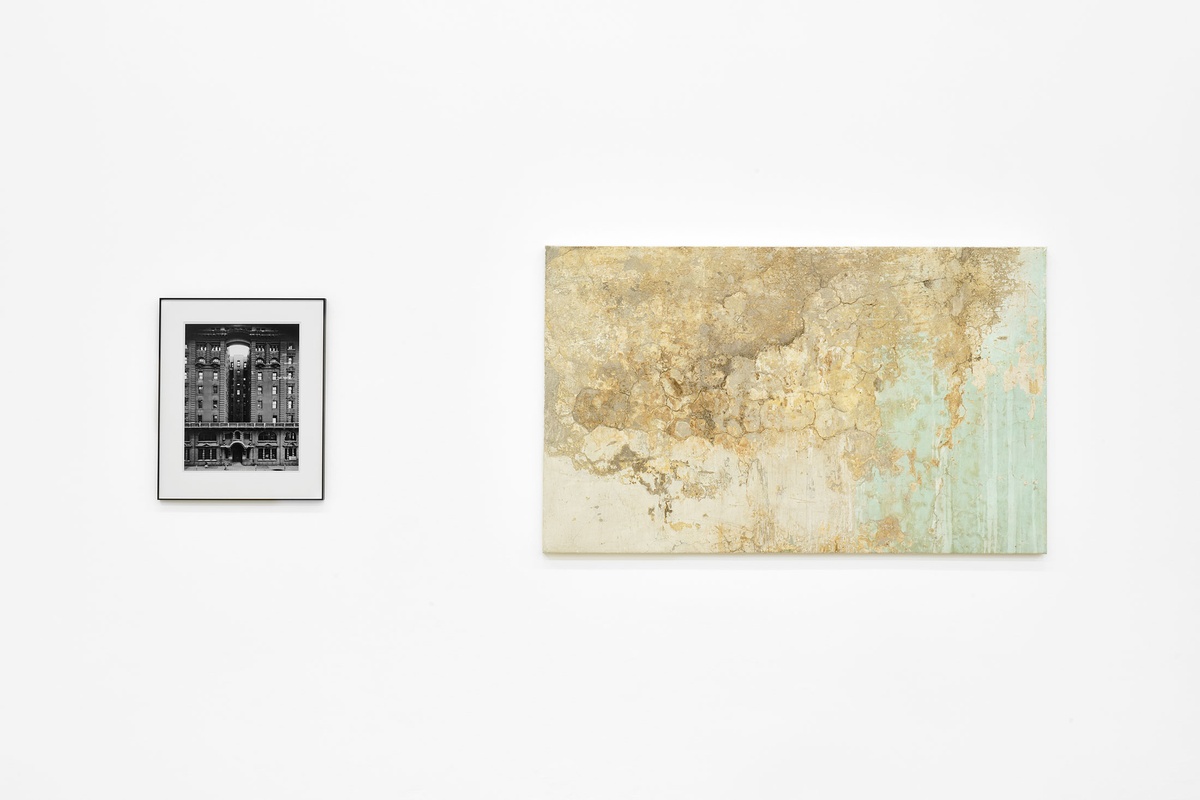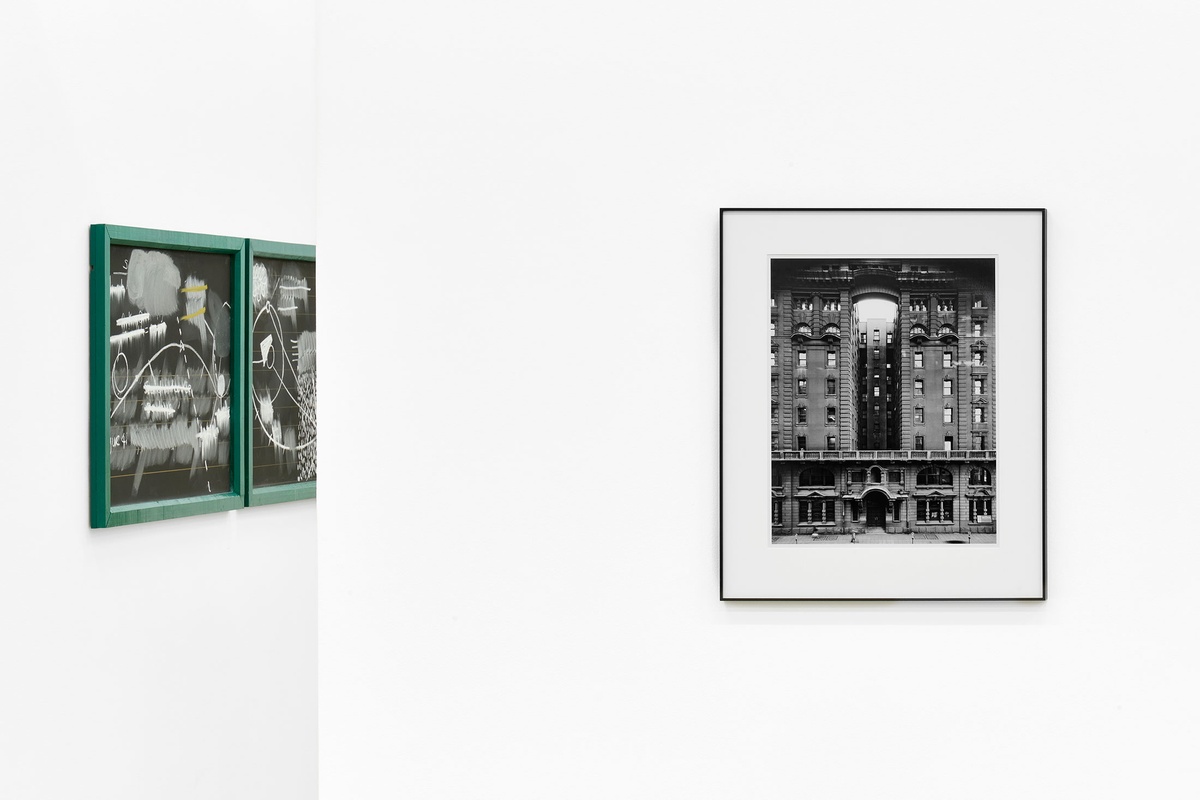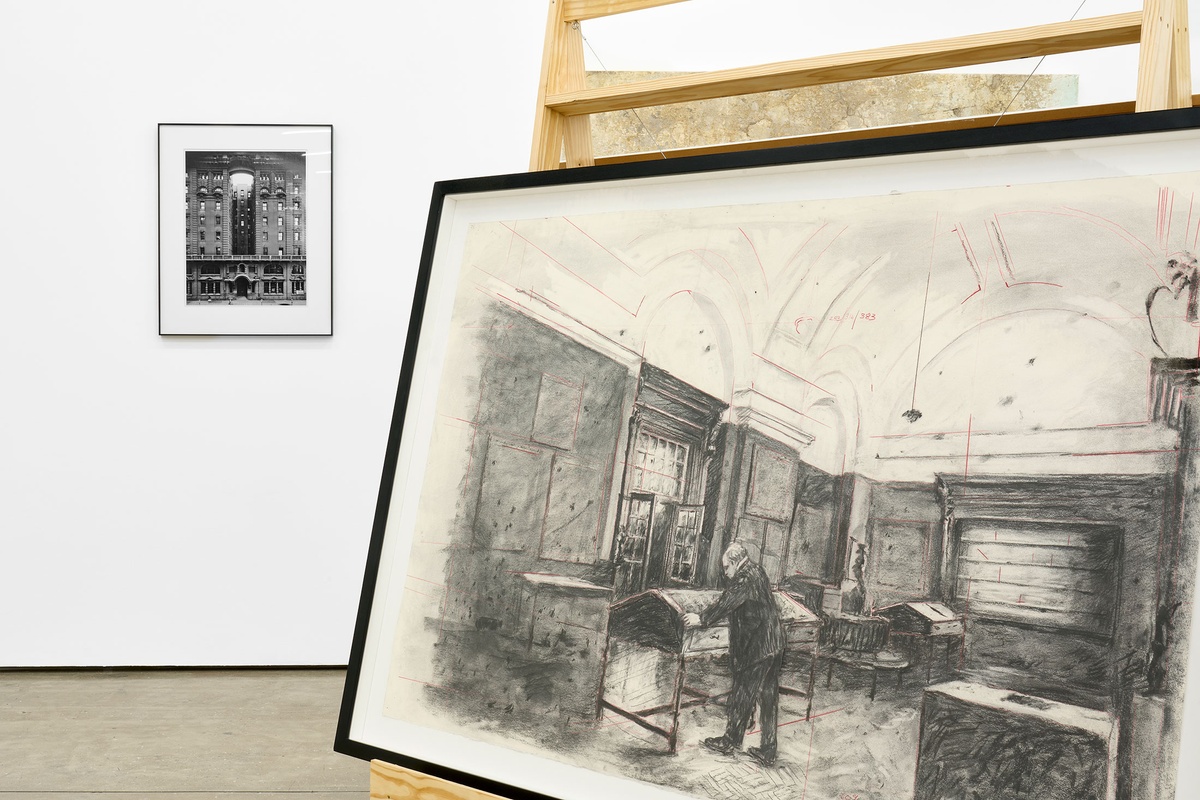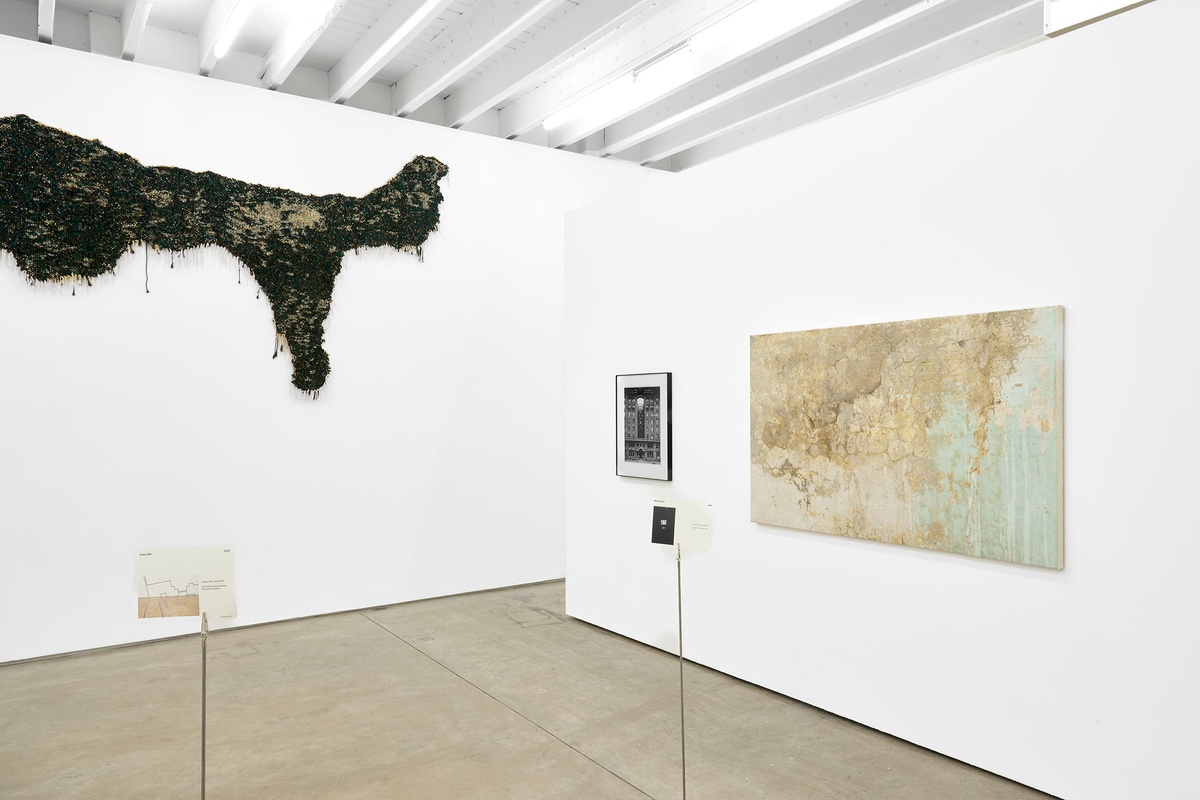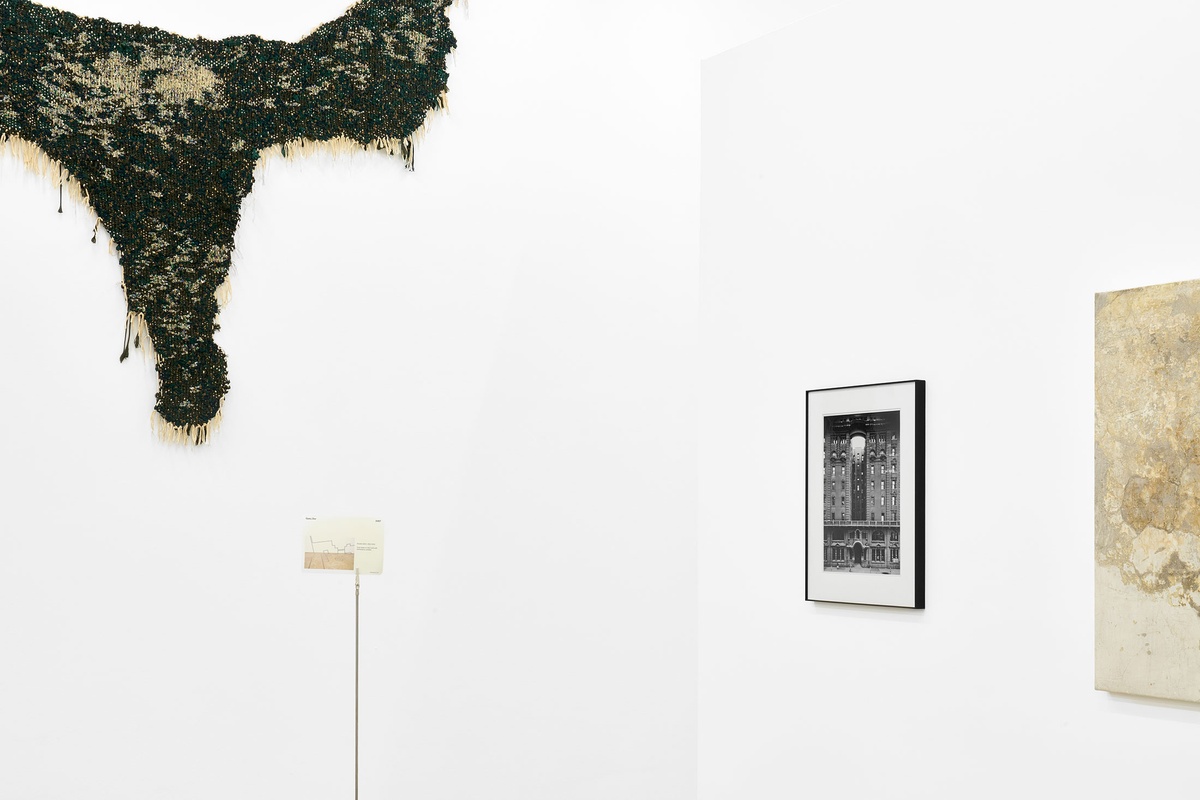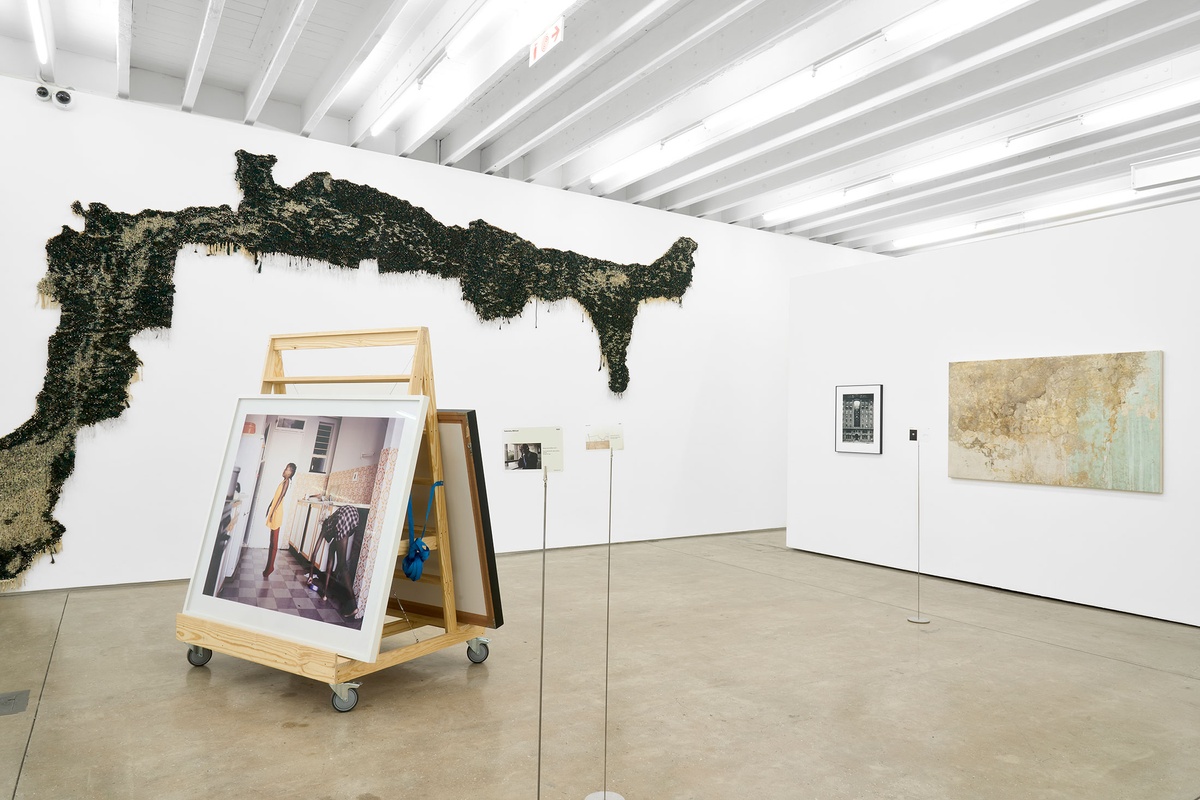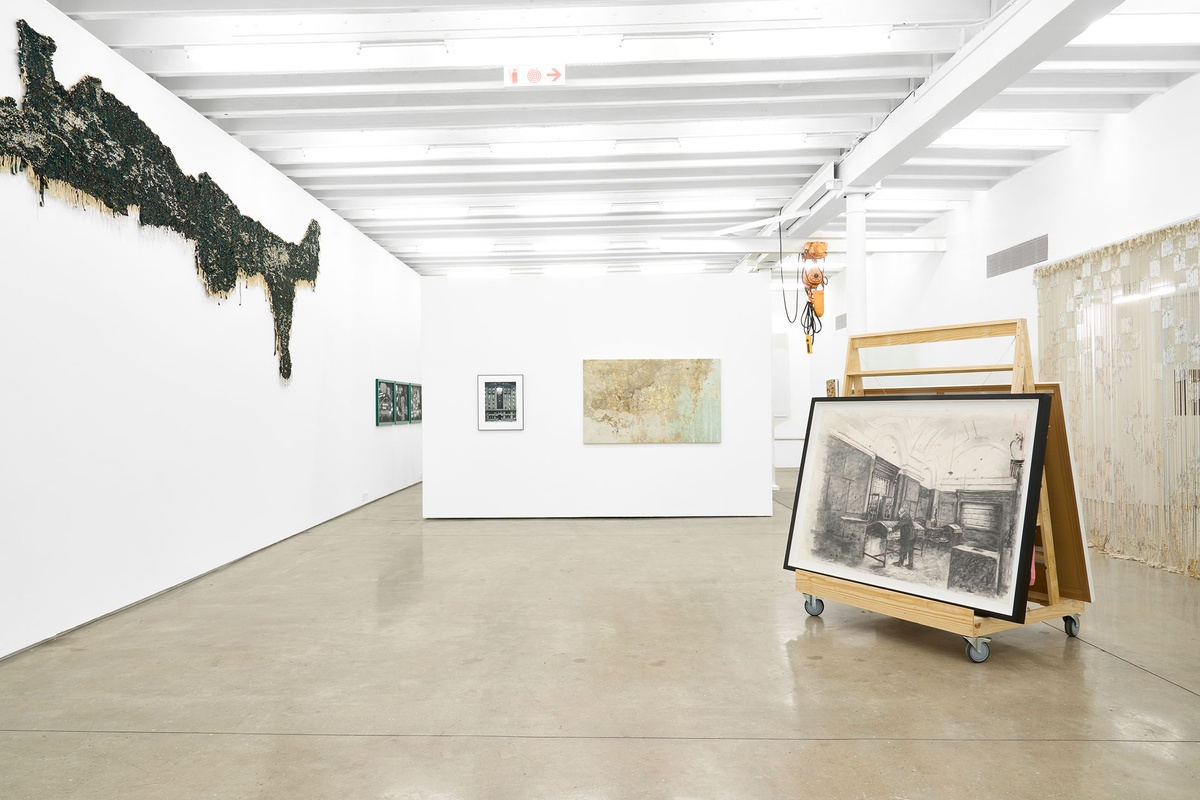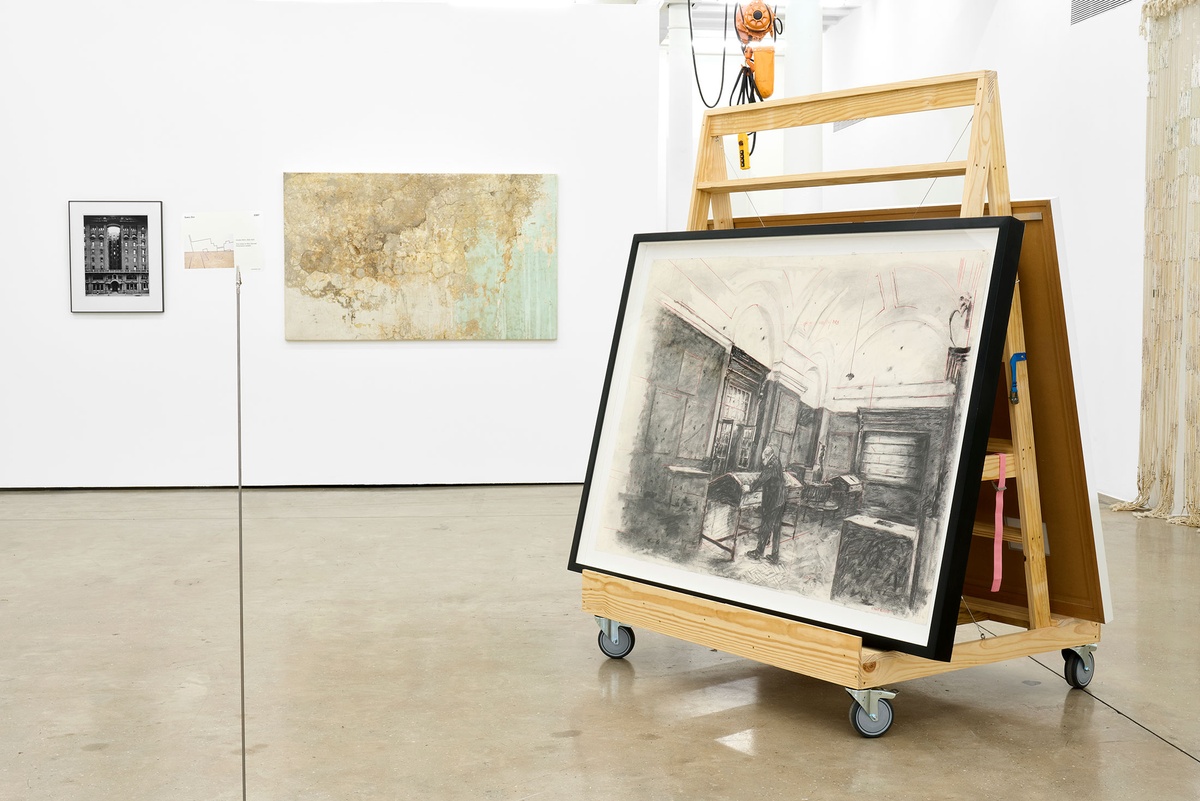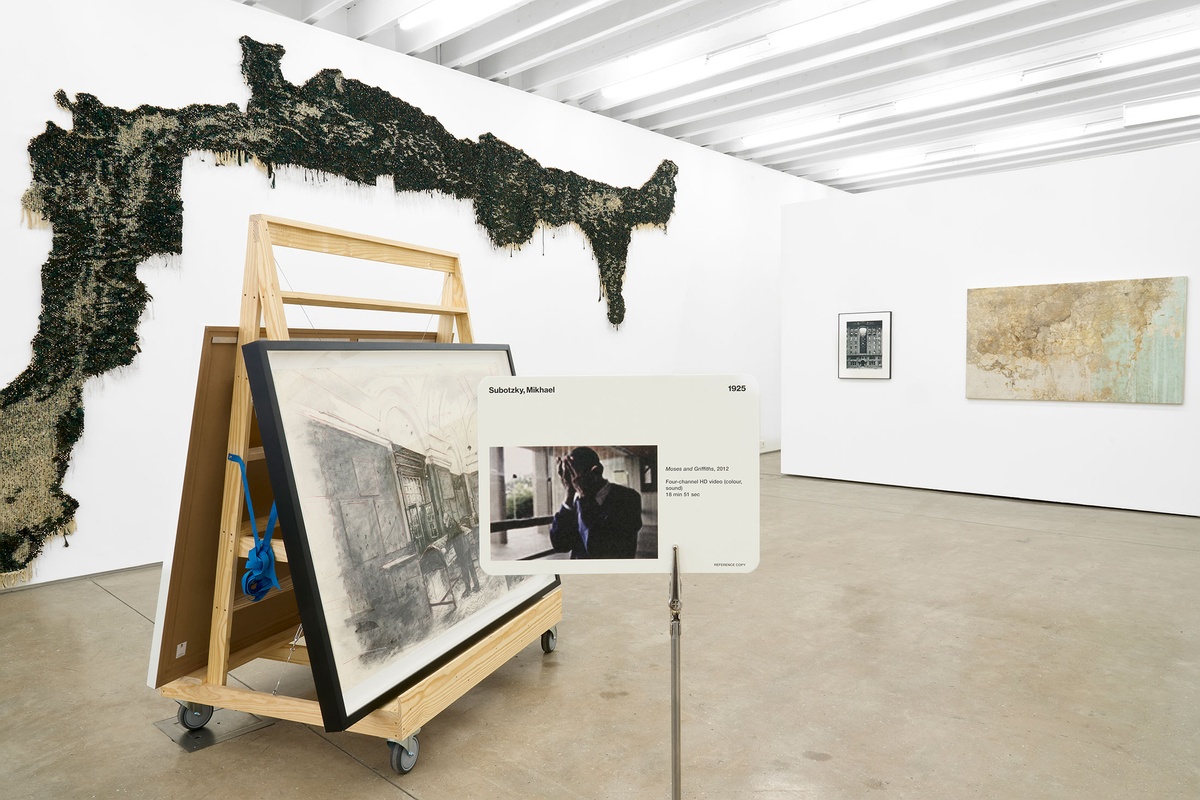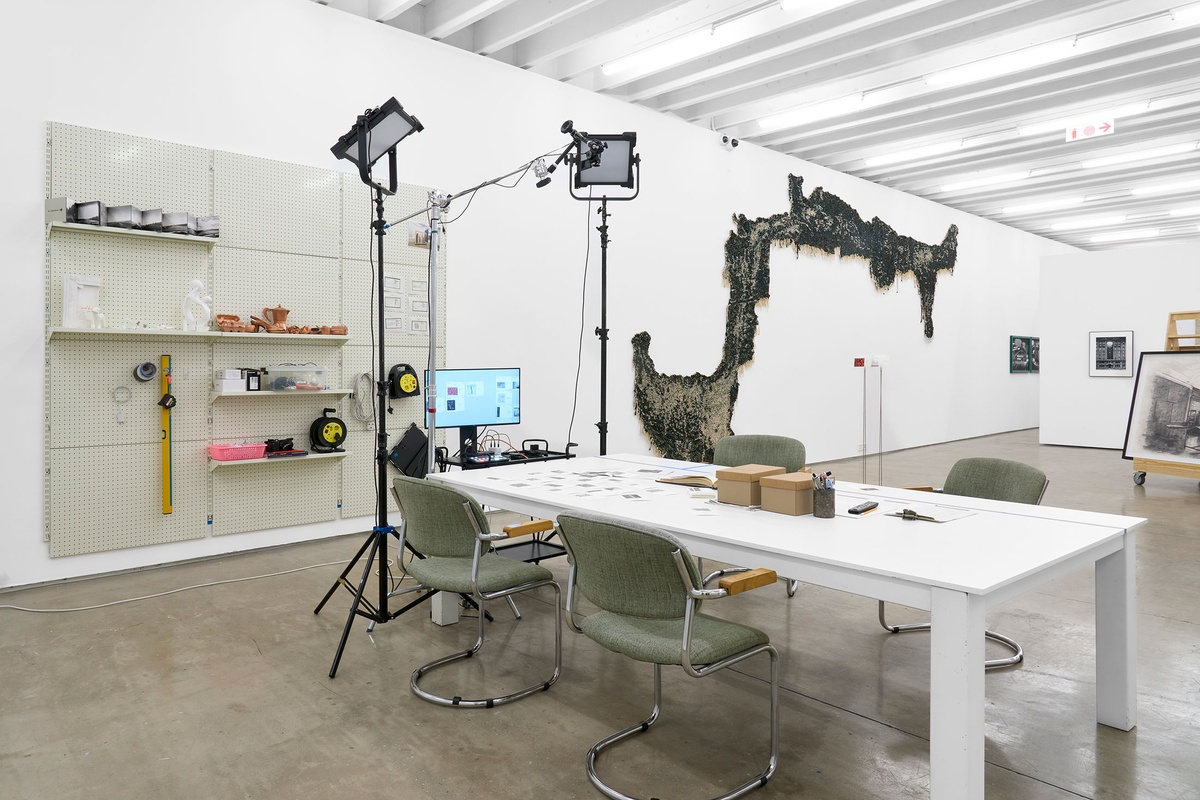David Goldblatt
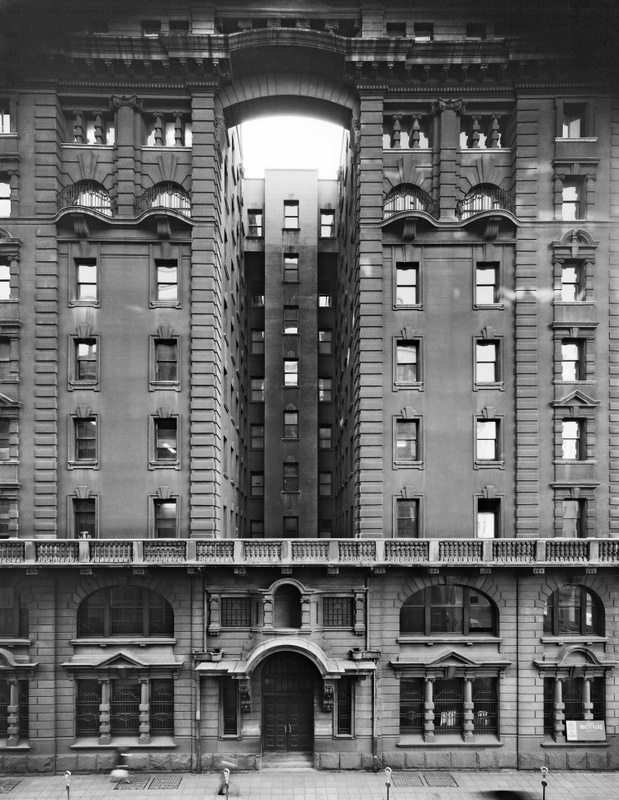
The Corner House is a coincidence of Goldblatt’s first subject, the city of Johannesburg, and his most enduring, structures. In the former, he found a contradictory pull: “Joburg is an ugly place; it’s brutal, but it has an electricity,” he said of his city. In the latter, he recognised concrete expressions of dominion, assertions of political and commercial power, of national idealism, made material in buildings and monuments. The titular head office in this photograph, commissioned at the turn of the 20th century by the mining financiers Hermann Eckstein, Julius Wernher and Alfred Beit, epitomised the immense wealth of the Witwatersrand’s Randlords at the time of its construction, their fortunes founded on and sustained by the exploitation of black workers. In Goldblatt’s study, the edifice’s striking symmetry is undermined by his framing, its copper-plated dome wholly excluded. Instead, a façade of impenetrable stone and blind windows; a small fragment of white sky. Not so much majestic, as the architects intended, as forbidding. Here, the human subject is notably absent but for two small blurs dwarfed beneath capitalism’s brick-and-mortar image.
b.1930, Randfontein; d.2018, Johannesburg
“I was drawn,” the late photographer David Goldblatt wrote, “not to the events of the time but to the quiet and commonplace where nothing ‘happened’ and yet all was contained and immanent.” A preeminent chronicler of South African life under apartheid and after, Goldblatt bore witness to how this life is written on the land, in its structures or their absence. Unconcerned with documenting significant historic moments, his photographs stand outside the events of the time and yet are eloquent of them. Through Goldblatt’s lens, the prosaic reveals a telling poignancy. Even in those images that appear benign, much is latent in them – histories and politics, desires and dread. His photographs are quietly critical reflections on the values and conditions that have shaped the country; those structures both ideological and tangible. Among his most notable photobooks are On the Mines (1973), Some Afrikaners Photographed (1975), In Boksburg (1982), The Structure of Things Then (1998), and Particulars (2003).
